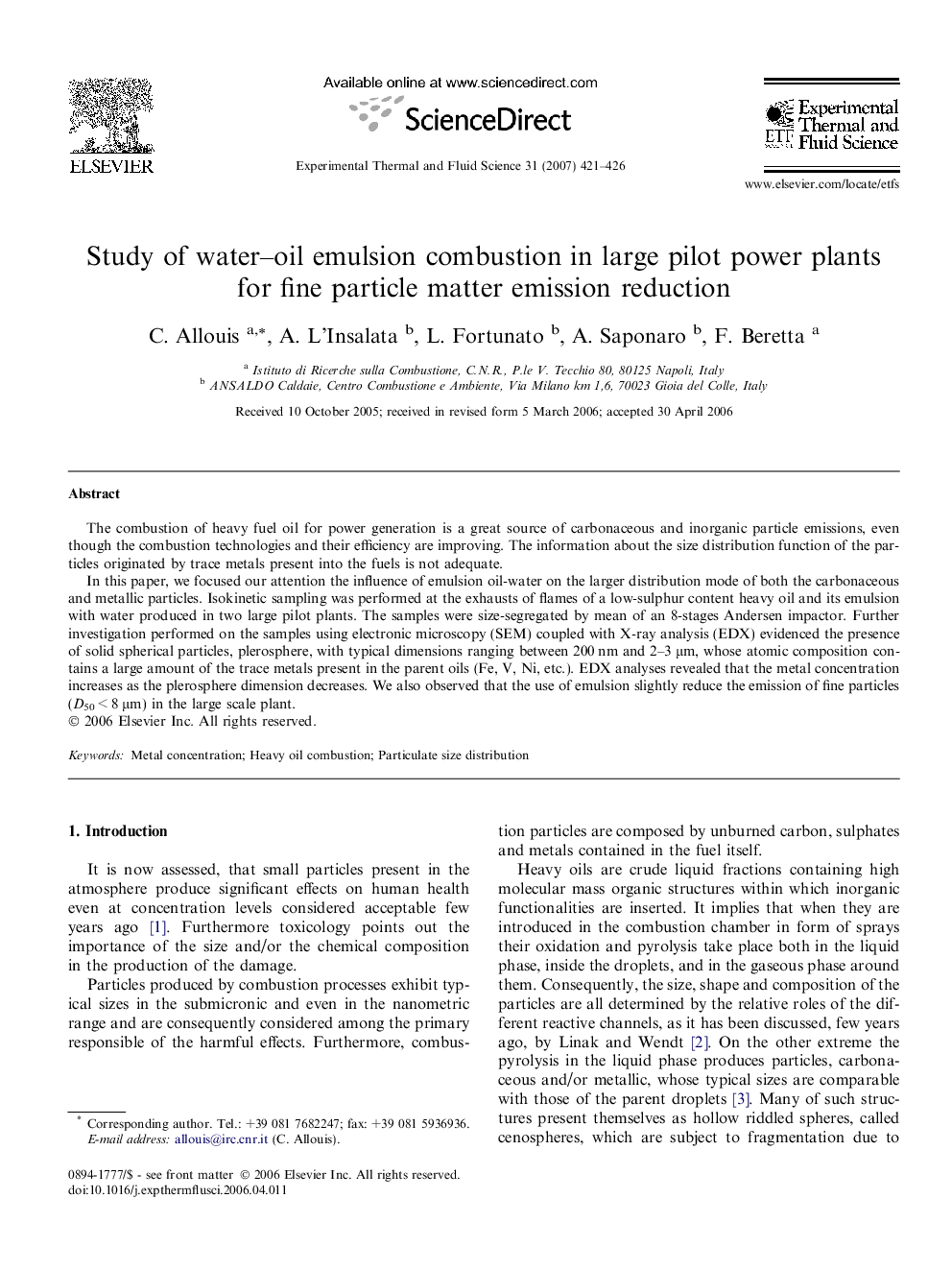| Article ID | Journal | Published Year | Pages | File Type |
|---|---|---|---|---|
| 652593 | Experimental Thermal and Fluid Science | 2007 | 6 Pages |
The combustion of heavy fuel oil for power generation is a great source of carbonaceous and inorganic particle emissions, even though the combustion technologies and their efficiency are improving. The information about the size distribution function of the particles originated by trace metals present into the fuels is not adequate.In this paper, we focused our attention the influence of emulsion oil-water on the larger distribution mode of both the carbonaceous and metallic particles. Isokinetic sampling was performed at the exhausts of flames of a low-sulphur content heavy oil and its emulsion with water produced in two large pilot plants. The samples were size-segregated by mean of an 8-stages Andersen impactor. Further investigation performed on the samples using electronic microscopy (SEM) coupled with X-ray analysis (EDX) evidenced the presence of solid spherical particles, plerosphere, with typical dimensions ranging between 200 nm and 2–3 μm, whose atomic composition contains a large amount of the trace metals present in the parent oils (Fe, V, Ni, etc.). EDX analyses revealed that the metal concentration increases as the plerosphere dimension decreases. We also observed that the use of emulsion slightly reduce the emission of fine particles (D50 < 8 μm) in the large scale plant.
